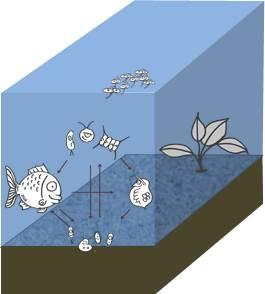

Sediments in the riverbed are a central part of the river system with important ecological key functions:
• Sediments are the habitat of many water-bound organisms living in the river.
• Sediments are a key element within cycles of material.
• Nutrients and pollutants are often bound to sediments.
When environmental factors in the water change, such as the pH value, the sediment can convert from a sink into a pollutant source. This happens by releasing the contaminants bound to the sediment, thus getting available to living organisms and influencing the entire chemical and ecological conditions of a water body. Environmental factors change, for example, when sediments are thawed and relocated (remobilized) by flood events or by dredging during restoration activities. In this project, the Federal Institute of Hydrology examines whether the planned project actions for river restoration will have an impact (and which one) on sediment quality.
First, the current state of the sediments is assessed by means of chemical analysis and ecotoxicological test methods. The data obtained are recorded in a sediment quality cadastre and serve as a basis for the creation of a report on the sediment quality which is sheduled for 2023. This concept is intended to provide an overview on possible hot spots and procedures for dealing with (remobilized) sediments, resulting for example from restoration measures. The sediment monitoring of project actions at the same time serves to monitor the ‘Living Lahn’ project success (Action D 3).